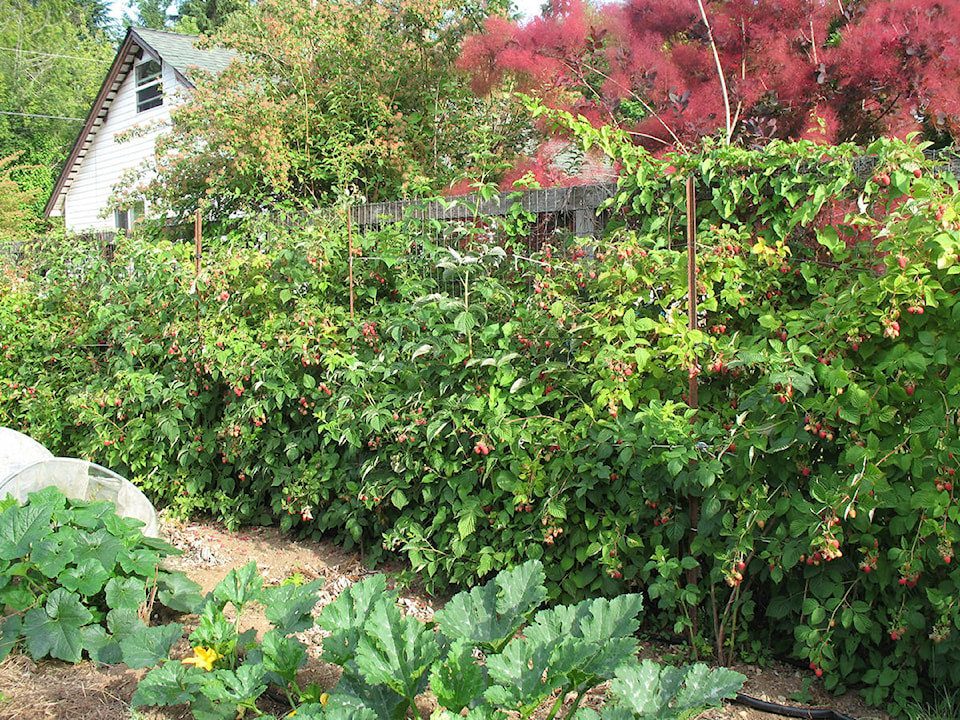By Mary Lowther
Since we need bees for our garden we must grow plants that attract them, so why not grow plants that will also feed us?
Dwarf fruit trees bloom in early spring and can be grown flat against a wall or fence, taking up little space and seducing early Mason bees. Overwintering plants grown out for seed also flower in spring, attracting bees and other pollinators. All the berries attract visitors when they’re in flower and some, like ever-bearing raspberries and strawberries, can produce flowers all summer.
Raspberry canes reproduce readily; the few canes I planted 10 years ago have multiplied into a 30 by two foot thicket and extend their hegemony into the blueberries. My experience suggests that raspberries are the most bee-attracting plant. When they flower, bees come a buzzing, and if the nectar tastes anything like the berries it’s no wonder.
There’s a correlation between flavour and nutrient level, and these berries pack a punch. One cup contains about 30 mg. of vitamin C, significant levels of flavonoids, and anti-oxidants that play a role in prevention of cancer, aging, inflammation and neurodegenerative disease. Remember, though, that it isn’t medicine if it tastes good!
Raspberries require little care, and mine are never bothered by pests or diseases. I side dress the rows with dry organic fertilizer every three weeks, spray them with compost tea every two weeks and water with a soaker hose for half an hour twice a week. My 30 feet of berries have given us a gallon of berries already this year and the canes are still dripping with them. It’s hard to keep up.
I made a frame to hold the canes upright for easier picking, hammering several lengths of rebar into the ground along the outside of the bed and joining each of them with wire to the fence on the other side. I strung three lengths of wire to the rebar along the bed so that each length is two feet above the other. They grow FAST, so every few days I check up on them and stuff growing canes behind the wires to keep them contained.
Raspberries are tender little souls that don’t last more than a few days once picked, so we gorge on them, give some away and preserve the rest by freezing, drying and making jam. I freeze them individually on trays in the freezer, then pour them into plastic bags. I dry them by pouring them into a dandy cone shaped sieve I requisitioned from David when we got married, then mashing the berries in the cone with a custom wooden roller and the pulp squeezes out the holes, leaving the seeds inside the sieve. I reluctantly compost the seed mash because I haven’t found a use for it. Yet.
I spread the relatively seedless pulp on dehydrating sheets to make fruit leather that then gets stored in a cool, dry place. In winter I cut them into small pieces as I need them for recipes to replace raisins.
I seem to have strayed from my original subject. Trust me, when pollinators catch the scent of raspberries they make a bee line for them, and will no doubt stop along the way to visit the kale.
Please contact mary_lowther@yahoo.ca with questions and suggestions since I need all the help I can get.
